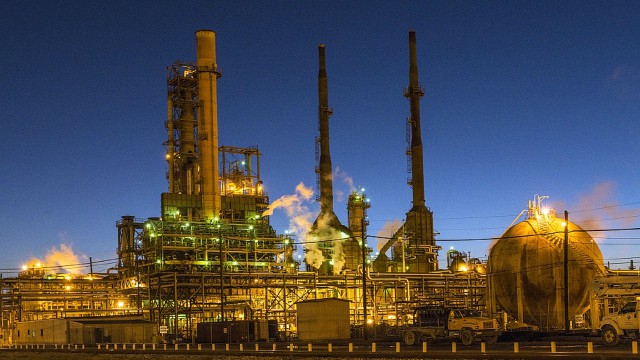Over the past week, the price of oil increased by close to 5% per barrel as supply/demand forces have finally started to realign after several years of imbalance. At almost US$64.50 per barrel, there is now rationale for producers to continue producing. For investors, the higher price of oil translates to the potential for higher profits in the coming quarters, as many of the projects that were simply viewed as “sunk costs” are potentially becoming very profitable investments.
For investors looking to benefit from these higher prices, there are a number of ways to do so. The first and most obvious is to purchase shares in Canada’s oil companies, which include names such as Baytex Energy Corp. (TSX:BTE)(NYSE:BTE). Baytex is involved in the development of oil properties in an effort to bring the resource to the surface for refinement.
For investors seeking a lower-risk investment in the sector, oil pipeline companies have traditionally been low-risk investments, as dividends have continued to be paid monthly, and the revenues have remain largely flat for the services provided. Essentially, the cost to flow oil through a pipeline is not effected by a higher or lower price of oil. Inter Pipeline Ltd. (TSX:IPL) currently offers a dividend yield of 6.5% and yet has paid out only 30.7% of cash flow from operations over the past three quarters. For the 2016 fiscal year, the ratio was 58.4%.
The not so obvious way to profit from the oil sands is with the name Sprott Inc. (TSX:SII). Although many investors are keenly aware of this name and the past success that it’s enjoyed, there are many newcomers to the market who are not familiar with the name. In the money-management business, the firm previously focused on the resource sector (while it was exploding) and became very well known to investors willing to take on a higher amount of risk. Essentially, it was a niche money manager.
At a current price of less than $2.50 per share, the company has done a fantastic job at re-positioning its product offering and enjoying revenues, which are dependent on the overall equity markets and not just the price of resources.
With the ability to issue new debt and equity, however, the company’s past expertise may be coming back into style. As oil prices increase (the contango continuing in the future), the company is in a prime position to drive revenues significantly further as many smaller players need to raise capital to resume production or potentially start a project that would now be profitable.
Here’s hoping that these projects will benefit the investors and investment bankers alike.









